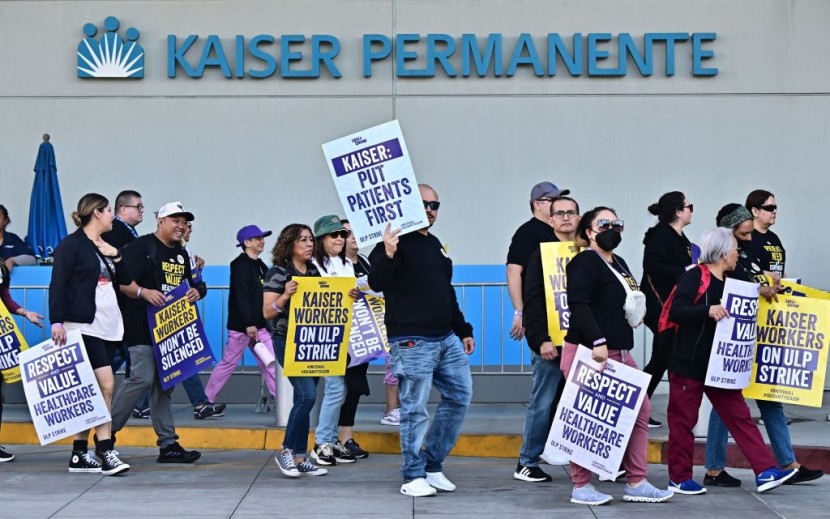
Without an agreement between healthcare behemoth Kaiser Permanente and the unions representing the 75,000 employees, the huge strike entered its last day on Friday, October 6. The demonstrations this week were meant to address concerns about salaries and staffing shortages.
The End of Three-Day Walkout
The three-day strike carried out in numerous states will officially conclude Saturday at 6:00 AM local time. Staff are expected to return to their roles at Kaiser's hospitals and clinics that serve almost 13 million Americans.
The two parties did not have any negotiation sessions planned after ending their discussions at noon on Wednesday, October 4.
In response to Kaiser executives' disregard for the short-staffing situation made worse by the COVID-19 pandemic, union leaders called for a three-day walkout in California (where the majority of Kaiser's facilities are situated), Colorado, Oregon, and Washington.
According to AP News, the Coalition of Kaiser Permanente Unions claims that their intention was to raise awareness of the issues so that people would rally to their cause. "No health care worker wants to go on strike. I hope that the last few days have helped escalate this issue," said Caroline Lucas, the coalition's executive director.
The Oakland, California-based firm issued a warning that the work stoppage might lead to inconveniences in arranging non-emergency operations and obtaining appointment schedules. According to Kaiser spokeswoman Hilary Costa, the corporation is aiming to resume negotiations "as soon as possible."
Negotiating in Bad Faith?
In August, unions for Kaiser employees demanded a $25 hourly minimum wage and annual raises of 7% for the first two years and 6.25% for the next two, as reported by AP News.
Kaiser, which earned $2.1 billion in the most recent quarter, proposed a minimum hourly pay of $21 to $23 in a statement released on Wednesday. The corporation also said that it had hired an additional 10,000 personnel, bringing the total number of new employees in the hospital system to 51,000.
Union members claim that management has been negotiating in bad faith throughout discussions and that understaffing is increasing profits for the hospital system at the expense of patients.
According to Lucas, the two sides have reached a number of preliminary agreements but none on crucial issues like long-term staffing plans or pay raises. She also said that the group was waiting for Kaiser to return to the negotiating table on behalf of the health system's roughly 85,000 workers throughout the country.
The current labor agreement was finalized in 2019, before the pandemic.
This is one of several businesses, including transportation, entertainment, and food industry, that have gone on strike this year. The year 2023 has seen numerous protests in the healthcare business, which is already struggling under the weight of high workloads and the COVID-19 outbreak.
© 2025 HNGN, All rights reserved. Do not reproduce without permission.








